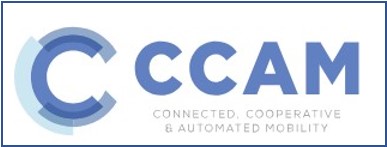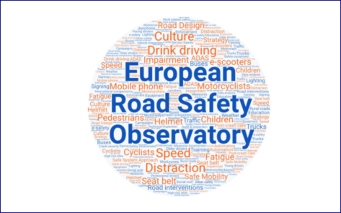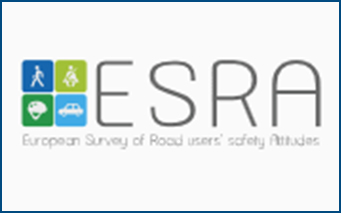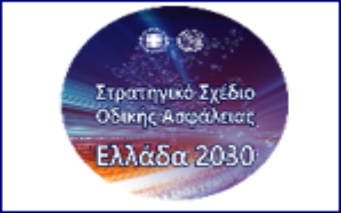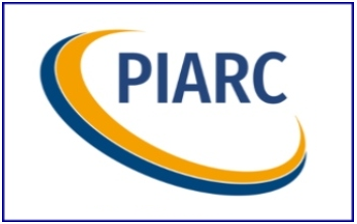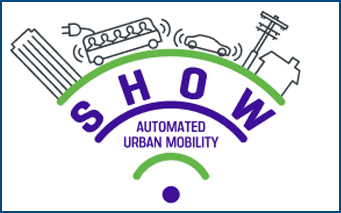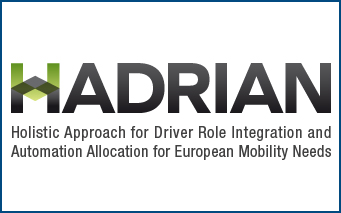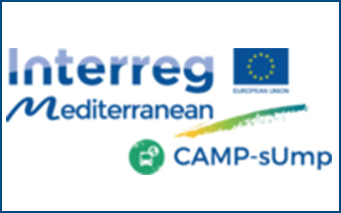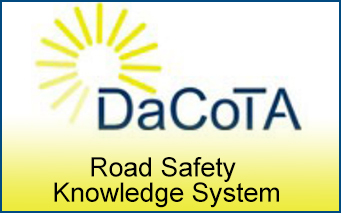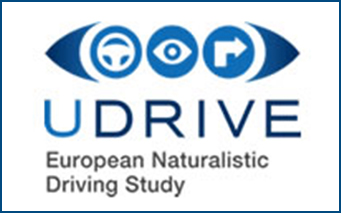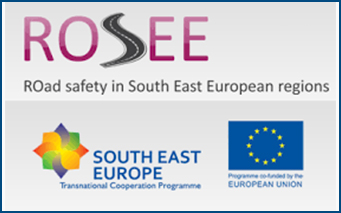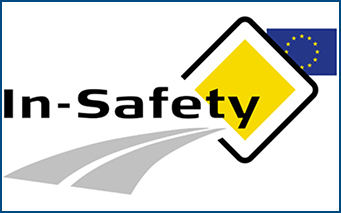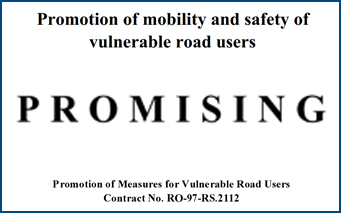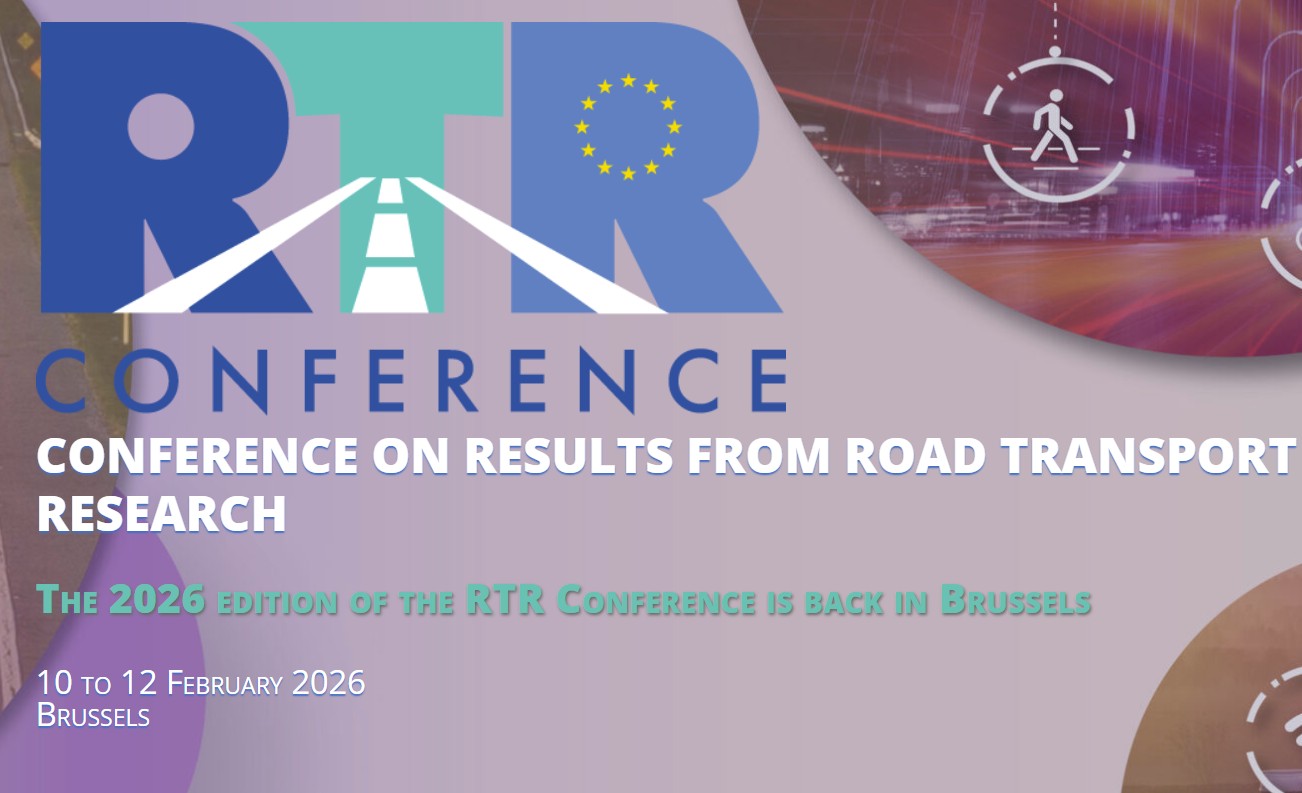Author: Ioannis Papadogiorgakis

This year we followed our dreams with passion, system and stamina, promoting intensively road safety scientific excellence and safer mobility everywhere and for all. At mid-way to the decade target of -50% road fatalities, we need to further strengthen our individual and collective efforts to sincerely include traffic safety into the mobility agenda and persist in implementing the vision zero traffic fatalities.
We thank you all for the excellent cooperation and we are sending you our very best wishes for Merry Christmas and a Very Lucky New Year, full of personal and professional achievements. 

The Hellenic Institute of Customer Service has recently honored NTUA in collaboration with Global Link, recognizing their excellence in customer experience and responsible service practices. The awards received were Best Mobile Customer Experience and Best Organisation for ESG Factors & Practices in Customer Service. The recognition was based on the SmartMaps digital platform, with the SmartMaps website used as the candidate product. The platform combines data from mobile phone sensors and machine learning algorithms, enabling users to select safer and more environmentally friendly routes, while improving overall traffic efficiency. These distinctions highlight the value of applying innovative digital solutions to address key social and environmental challenges and reflect the impact of collaboration between academia and industry in delivering customer-centric and sustainable services.

The European Road Safety Charter of the European Commission, has recently published a new Article focusing on driving under the influence of alcohol or drugs, which remains one of the leading causes of road crashes. Despite longstanding legislation and enforcement efforts, an estimated 25% of EU road fatalities are alcohol-related, and drug impairment is an increasing concern in fatal collisions. Addressing driving under the influence requires an integrated, multi-measure approach, combining strong health policies to reduce alcohol consumption, lower legal BAC limits, visible and consistent enforcement, and targeted road safety campaigns to shift social norms and promote alternative transport options. 
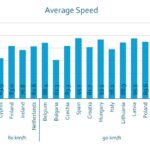
The European Commission has recently published findings from Trendline project on key road safety performance indicators (KPIs), revealing significant gaps in compliance with basic safety measures across EU Member States. This data paints a troubling picture of speeding compliance, particularly in urban environments. In many countries, compliance falls below 50% on city roads—precisely where pedestrians, cyclists, and other vulnerable road users are most at risk. Furthermore, while driver seat-belt use shows strong compliance, often exceeding 95% on motorways, rear-seat belt use tells a different story. Moreover, although the data shows high overall compliance with alcohol limits, at approximately 98, the seemingly small 2% non-compliance rate translates to roughly five million impaired drivers on EU roads. These indicators support road safety strategies and monitoring efforts at both national and European levels as the EU works toward its 2030 road safety targets. 

The Horizon Europe research project IMPROVA has recently released its 3rd Newsletter, focusing on enhancing road safety by addressing the complexities of long-term consequences (LTC) caused by road traffic crashes. This version of the Newsletter mainly focuses on this year’s 1st IMPROVA PANEL where the IMPROVA partners, each representing a crucial part of the consortium (academy, research, medical, and industry), presented an overview of what has happened in the project since it started. Moreover In 2025, IMPROVA strengthened its presence in the international road safety research community, presenting its findings and research approach at several key conferences and expert meetings in Europe and Asia. In total, IMPROVA participated in 11 industry events, conferences and stakeholder meetings globally. 

The Horizon Europe research project CulturalRoad has recently launched a Survey to gather perspectives and better understand users’ priorities. The Project is working on new methodologies that integrate cultural and geographical diversity into Cooperative, Connected and Automated Mobility (CCAM) deployment plans, with the aim of ensuring that CCAM improves mobility for everyone. The questionnaire covers physical limitations, digital accessibility, safety measures, and other ethical considerations related to mobility in general, and CCAM in particular. No prior knowledge is required to participate – everyone’s experience is valuable. The Survey takes from 5 to 30 minutes to answer and participation is possible either anonymously or by name. Take part in the Survey here. 

The Hellenic Ministry of Infrastructure and Transport recently launched a road safety campaign, to draw public attention on the safety of Greek drivers with focus on the risk caused to other’s lives. This Campaign aims to reduce serious traffic crashes and fatalities and save all road users lives, boosting road safety awareness and respect to other road users and the new Road Traffic Code. 

A paper titled Incentive-Based Telematics and Driver Safety: Insights from a Naturalistic Study of Behavioral Change authored by Armira Kontaxi, Harris Sideris, Dimitrios Oikonomopoulos and George Yannis has been published in Sensors. This paper investigates driver profiling and behavioral change using high-resolution telematics data collected through the OSeven DrivingStar smartphone application. The naturalistic driving experiment was divided into two main phases: a baseline period with personalized feedback (Phase A) and an incentive-based phase (Phase B) comprising two gamified driving challenges with distinct reward criteria. The analysis of K-means clustering identified three driver profiles — Low-Exposure Cautious, Balanced/Average, and High-Risk Drivers — based on exposure, harsh events, speeding, and mobile phone use. The findings indicate that the Balanced/Average group exhibited statistically significant improvements during both challenges, reducing speeding frequency and intensity, while High-Risk Drivers achieved moderate reductions in speeding intensity. Furthermore, this Study contributes to the growing body of research on gamified driver feedback by linking behavioral clustering with responsiveness to incentives, providing a foundation for adaptive and personalized road safety interventions. 

The Horizon 2020 research project PHOEBE has recently released the PHOEBE 6th Newsletter, which provides information on the latest outcomes of the EU-funded ‘Predictive Approaches for Safer Urban Environment’ (PHOEBE) project aiming to increase the road safety of vulnerable road users, especially those who use active mobility and e-scooters. PHOEBE partners are strengthening their collaboration beyond the project framework, supported by initiatives such as the official accreditation of The Floow as an AiRAP Attribute Supplier. 
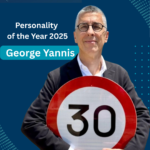
The International Road Federation (IRF) has honoured Professor George Yannis with the IRF Personality of the Year Award 2025, recognising his exceptional leadership, scientific contribution and global impact in advancing road safety and sustainable mobility. His academic influence is reflected in a remarkable publication record of over 1,000 scientific papers, widely cited around the world, and contribution in more than 350 research and engineering projects. Beyond academia and institutional leadership, Professor Yannis has also demonstrated an inspiring personal commitment to safer cities. In November 2024, he completed an extraordinary challenge: running 30 Marathons in 30 months to promote the adoption of city-wide 30 km/h speed limits. By awarding Professor Yannis the Personality of the Year 2025, the IRF celebrates not only a distinguished professional career, but a lifelong dedication to making mobility safer for all, through science, advocacy and personal action. 

The European Transport Safety Council (ETSC) has published the 48th PIN Flash Report titled “Tapping the potential for reducing work-related road deaths and injuries“. This Report examines how governments, Authorities and employers are addressing the issue of work-related road deaths, identifies examples of good practice and highlights remaining gaps. Specifically, data from 16 European countries show that work-related road deaths account for 30-40% of all road deaths, but the official numbers are distorted by inconsistent reporting, missing data and incompatible national definitions. The findings underscore the need for closer alignment between road safety and Occupational Safety and Health (OSH) systems, stronger data integration and clearer accountability for road risk management at every level. 



A global coalition of partners announced their commitment to the Implementation of the United Nations Decade of Sustainable Transport 2026-2035, to accelerate the transition towards inclusive, safe, green and efficient road systems for all. More precisely, IRF, Arup, NTRO, Global Alliance of NGOs for Road Safety, FIDIC, iRAP, ORIS and World Wildlife Fund joined forces to translate the vision of the Decade into concrete action by providing strategic direction and practical support for those who plan, build and manage road systems. At its core stands the Roadmaps for Change series will outline policy actions, technical standards and tools, replicable practices, innovation and indicators of progress, together with a capacity-building programme for trainings and peer-learning activities, with a special focus on road and transport public Authorities. 

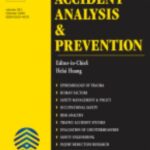
A paper titled State-of-the-art review on sustainable driving behavior: trade-offs between road safety, fuel consumption and emissions authored by Virginia Petraki, Apostolos Ziakopoulos and George Yannis has been published in Accident Analysis & Prevention. This paper aims to systematically review the role of driving behavior, as expressed by road crashes, fuel consumption, and vehicular emissions. A two-stage PRISMA approach was developed to shortlist the most relevant studies for systematic review out of 1,120 initial studies, with each stage focused on safety and eco-driving behavior studies. The findings suggest that the main driver behavior factors found to affect both road crashes and fuel consumption/emissions are related to average and instantaneous driving speed and acceleration, harsh acceleration and deceleration events, driving volatility, vehicular jerk, and idling during driving. Furthermore, a discussion of the knowledge gaps in the potential of an integrated methodological framework of driving behavior assessment in the context of road safety, economy, and environmental sustainability is then provided, followed by the relevant conclusions. 

Dimitris Nikolaou, Eva Michelaraki, Maria G. Oikonomou, Marios Sekadakis and Stella Roussou, Research Associates of the Department of Transportation Planning and Engineering of NTUA were awarded with the NTUA Thomaidion Award for outstanding road safety publications in scientific journals. The Awards for publications in Scientific Journals concerned:
- Nikolaou D., Ziakopoulos A., Kontaxi A., Theofilatos A., Yannis G., (2024) “Spatial analysis of telematics-based surrogate safety measures”, Journal of Safety Research, Vol. 92, pp. 98-108.

- Yannis G., Michelaraki E., (2024) “Review of City-Wide 30 km/h Speed Limit Benefits in Europe”, Sustainability 2024, 16(11).

- Antonakaki A., Oikonomou M. G., Garefalakis T., Yannis G., (2024) “Driving Automation Systems Penetration and Traffic Safety: Implications for Infrastructure Design and Policy”, Infrastructures 2024, 9(12), 234.

- Sekadakis M., Kallidoni M., Katrakazas C., Trösterer S., Marx C., Moertl P., Yannis G., (2024) “The HADRIAN novel human–machine interface prototype for automated driving: safety and impact assessment”, European Transport Research Review 16, 64.

- Roussou S., Petraki V., Deliali K., Kontaxi A., Yannis G., (2024) “Cost benefit analysis of reducing speed limits in Athens to 30 Km/h”, Case Studies on Transport Policy, 18, 101289.

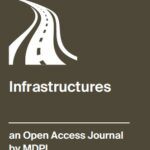
Infrastructures Journal has launched the 2nd Edition of the Special Issue titled: “Safer Roads Ahead: Exploring the Latest Innovations and Advancements in Road Design and Safety Technology, 2nd Edition” aiming to showcase recent developments, innovative methodologies, and emerging technologies that contribute to safer and more resilient road infrastructure. The submission deadline is 31 August 2026.
This Special Issue welcomes contributions on innovative approaches to road safety and infrastructure development. Relevant themes include emerging road design strategies, smart and adaptive roadway systems, and advanced safety solutions for vulnerable road users, as well as data-driven and AI-supported methods for identifying and mitigating crash risks,, and connected and autonomous vehicle technologies. Studies focusing on human factors, behavioural insights, and environmental or climate-resilient road design are likewise encouraged.
Guest editors of this special issue are Dr. Dimitrios Nikolaou and Associate Prof. Panagiotis Papantoniou. ![]()
![]()

Road fatalities in Greece in 2025 presented a significant decrease (21.1%) compared to 2024 figures, according to the provisional ELSTAT and Traffic Police data. This is the result of the intensification of enforcement of helmet wearing and drink-and-drive by the Police together with the new Road Traffic Code in Greece (voted in June and in force since September) which led to an astonishing improvement of driver behaviour and consequently to this very significant reduction or road crash fatalities.
These highly successful initiatives of the Greek Authorities are expected to lead to a record saving of 140 lives: 525 in 2025 in comparison to 665 in 2024. With these results (50 fatalities per million population), Greece is leaving the zone of lowest performance EU countries (64 fatalities per million population), and is approaching the EU average road safety performance (45 fatalities per million population) and might be ranked for the first time ever, below the 20th position in the EU. 


The World Road Association – PIARC recently published a Report titled “Motorcycle Protection Systems & Safety Aspects Of Management Of Traffic For Motorcycles” responding to the need of protecting one of the most vulnerable road user groups worldwide. The purpose of this Report is to provide evidence-based knowledge, case studies, and recommendations that can support PIARC member countries in addressing motorcyclist safety through both infrastructure measures and traffic management strategies. The scope of the Study includes literature reviews, international surveys, stakeholder interviews, and numerical/experimental analyses with emphasis in low- and middle-income countries. 

The World Road Association – PIARC recently published a Report titled “Management of Road Worksites”. This Special Project presents a critical and escalating global challenge: the growing safety, mobility, and environmental burden of road worksites. In response to these challenges, PIARC commissioned this Study to investigate current governance models and best practices from around the world. Its purpose was to synthesise these findings, benchmark capability gaps, and ultimately deliver a framework and practical toolkit. The design integrated a systematic literature review, a global survey, semi-structured interviews and a detailed analysis indicating a clear set of strategic actions necessary to mature global practice. 
Tongji University – Workshop on Traffic Control Systems for Future Mobility, Shanghai, December 2025

Tongji University organized with great success a Workshop on Traffic Control Systems for Future Mobility which took place in Shanghai, China on 4 December 2025. This Event aims to foster dialogue on road safety within traffic control and mobility developments and interventions. NTUA actively contributed with the following presentation:
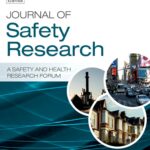
A paper titled Evaluating driver preferences between punitive and non-punitive speeding penalties: Results from a stated choice experiment authored by Athanasios Theofilatos, Apostolos Ziakopoulos, Evangelia Stratigi, Pantelis Kopelias and Dimitris Potoglou has been published in Journal of Safety Research. This Paper aims to investigate driver preferences regarding penalties for speeding violations in Greece: (Option A) immediate fines with off-road short detention (administrative process); (Option B) attendance of compulsory road safety seminars; and (Option C) judicial processes with possible dispute of fines in court. Data were collected via a Stated Choice (SC) survey conducted during June and July 2023 in Greece, involving 161 participants resulting in 805 choice situations, and were analyzed by utilizing a random parameter multinomial logit model to capture unobserved heterogeneity among drivers. The results showed that only 4.6% of respondents preferred the judicial process, indicating a strong deterrent effect of potential trial and associated costs. These findings point towards more effective enforcement strategies while balancing penalty costs and duration of compulsory off-road detention and promoting educational-related non-punitive measures. 

A paper titled Cross-cultural perspectives of vulnerable road user safety performance based on evidence from 39 countries authored by George Yannis, Apostolos Ziakopoulos, Dimitrios Nikolaou, Konstantinos Kaselouris, Mette Møller, Dagmara Jankowska-Karpa and Marie-Axelle Granié has been published in IATSS Research. This paper aims to provide a quantified update on VRUs safety performance by analyzing data from a broad-country sample. For this study, data was utilized from the third edition of the E-Survey on Road Users’ Attitudes (ESRA3) survey, which was conducted in 2023, covering 39 countries from 5 continents. A statistical analysis based on Self-Organizing Maps (SOMs) and clustering was conducted to meaningfully categorize VRU groups, enabling the quantification of each category and providing scientific documentation for more informed policymaking. Findings include the fact that VRU safety perceptions and behaviors differ significantly across regions, with Europeans feeling safer overall, with older VRUs displaying fewer risky habits than younger ones. Cyclists often neglect helmet use in particular countries (Thailand, Bosnia), while drug and alcohol consumption while riding is notably high in specific countries as well (Ireland, Thailand, the Netherlands). Furthermore, for all VRU modes, statistical tests revealed that there is a statistically significant association between younger individuals and higher-risk cluster categorization. Finally, the paper provides recommendations for road safety stakeholders operating at different levels, which could be implemented in efforts to enhance VRUs road safety. 

A paper titled Analyzing SHAP values of XGBoost algorithms to understand driving features affecting take-over time from vehicle alert to driver action authored by Marios Sekadakis, Thodoris Garefalakis, Peter Moertl and George Yannis has been published in Displays. This Study investigates the factors influencing Take-Over Time (TOT) during transitions from automated to manual driving, emphasizing the novelty of applying XGBoost modeling combined with SHAP analysis to uncover non-linear and implicit dependencies between features. Driving simulation data were utilized as key variables for the analysis. The findings indicate that higher automation levels resulted in longer TOT, with SHAP values consistently positive for AD Level 3, demonstrating the added value of explainable machine learning in clarifying these patterns. Furthermore, Dynamic driving parameters, such as deceleration and speed variability, were also significant. Moreover strong negative deceleration values were generally associated with shorter TOT, reflecting quicker responses under urgent braking. Speed showed a moderate positive effect on TOT at 80–110 km/h, with drivers taking additional time to assess the environment, but higher speeds (above 110 km/h) resulted in quicker responses. By combining methodological innovation with contextual insights, this study contributes to a deeper understanding of takeover behavior and provides actionable evidence for optimizing adaptive HMI design and takeover strategies in AD systems. 

A paper titled In full-touch HMI mode: How does car-following pressure, task complexity, and speed affect driver’s visual distraction characteristics? authored by Kunchen Li, Menglu Gu, Wei Yuan, Yisi Lu and George Yannis has been published in Accident Analysis & Prevention. This paper aims to investigate the effects of interaction tasks and traffic situations on drivers’ visual distraction characteristics in full-touch HMI mode. A total of 50 distinct participants were recruited: 30 took part in a real-road experiment, and 30 participated in a driving simulator experiment. Ten participants took part in both experiments, contributing to a total of 60 participant-sessions. Air volume control, temperature control, and call a contact are selected as typical tasks in each experiment. The results show that the mean off-road glance duration is influenced by the car-following pressure but not by the task. The mean glance duration is lower when the driver is following a vehicle, with an average decrease of 21.3%. Furthermore, higher speeds lead to a decrease in the total off-road glance duration, where participants tend to reduce the duration of each off-road glance while increasing the number of glances to compensate for the increased risk. The findings can differentiate the visual demands of various HMI tasks and clarify how drivers adapt their gaze behaviors as driving demands change (e.g., car-following pressure), offering safety-related recommendations for drivers. 

A paper titled Infrastructure use and related safety feeling of different road user types globally authored by George Yannis, Dimitrios Nikolaou, Konstantinos Kaselouris and Gerald Furian has been published in IATSS Research. The objective of this Paper is to investigate trends in road infrastructure usage and safety perceptions among car drivers and vulnerable road users across different types of roads worldwide. For this study, data from the third edition of the E-Survey on Road Users’ Attitudes (ESRA3), conducted in 2023 and covering 39 countries from 5 continents, were utilized. The results revealed that car drivers in Europe have the highest usage of inter-city motorways, while America leads in using thoroughfares and high-speed roads within cities. Moreover, in Europe, rural roads and roads connecting towns and villages are heavily utilized. Furthermore, moderate to weak linear relationships were discovered between the perceived safety of road infrastructure and road fatality rates, as well as between the perceived safety of road infrastructure and Gross Domestic Product. Lastly, recommendations for enhancing infrastructure safety, such as road maintenance and upgrades, are provided. 
Medical School of Hannover – 10th Expert Symposium on Accident Research (ESAR), Hannover, March 2026

The 10th International Expert Symposium on Accident Research (ESAR) will take place in Hannover, Germany on 25-26 March 2026. ESAR is organized by the Medical School of Hannover and it is a platform for exchanges of information on accident research issues, bringing together experts from medicine, engineering, law enforcement, and industry. The Conference will focus on accident research general, accident causation, pre-crash analysis, accident reconstruction, new data sources for accident research such as video observation and EDR, injuries, regulation and consumer information. Researchers can submit their contributions through ESAR@mh-hannover.de until 15 December 2025. 

The Hellenic Association for the deployment of Intelligent Transport Systems (ITS Hellas) in co-operation with the University of Patras, Department of Civil Engineering are organizing the International Conference ITS 2026 which will be held in Patras, on 12-13 November 2026. This Conference will be held under the theme “Intelligent Green Mobility and Resilience Society”. The ITS Conference is an opportunity for industry, public organizations, local government and authorities, universities, researchers, consultants, constructors and freelancers to exchange views on arising problems and innovative solutions, including policies. Researchers can submit their contributions until 20 April 2026 here.

A NTUA Diploma Thesis titled “Driving Behavior Analysis Using Connected Vehicle Data” was recently presented by Andreas Englezos. For the purposes of this research, variables related to speed, engine temperature, the anti-lock braking system (ABS), and other driving characteristics were examined. The data were collected over a three-month period to identify different route profiles in terms of driver behavior. From the application of the algorithm, it was found that the variable with the highest importance value was the engine oil temperature. Finally, a Binary Logistic Regression was performed to examine the extent to which the independent variables influence the probability of ABS activation, which showed that the variable with the greatest influence was engine activation. 


Ayvens Societe Generale Group organized with great success a Webinar on Trends and Developments in Mobility, which took place online on 13 November 2025. This Event, aimed to educate the participants on the developments in the automotive industry, the transition to electrification, the new era of mobility global trends and developments as well as safe mobility and road safety approaches. NTUA actively contributed with the following presentation:

Saracakis Group of Companies in cooperation with NTUA and the Ministry of Infrastructure and Transport organized with great success a Workshop on Safe Driving Behavior Courses, which was held in Athens, on 12 November 2025. This Ιnitiative aimed to educate the participants on safe driving, reduce serious traffic accidents and fatalities and save the lives of young people. National road safety experts and driver safety instructors commented on the issue.  NTUA actively contributed with the following presentation:
NTUA actively contributed with the following presentation:

The Institute of Transport Economics (TOI) organized with great success the 13th International Cycling Safety Conference (ICSC2025) which was held in Oslo, Norway, on 4-6 November 2025. The annual ICSC conference has effectively promoted key scientific findings in cycling safety and offered a first-class forum for sharing scientific results and learning from one another. This year’s theme was “Knowledge for Prevention”. 
 NTUA actively contributed with the following papers:
NTUA actively contributed with the following papers:
























